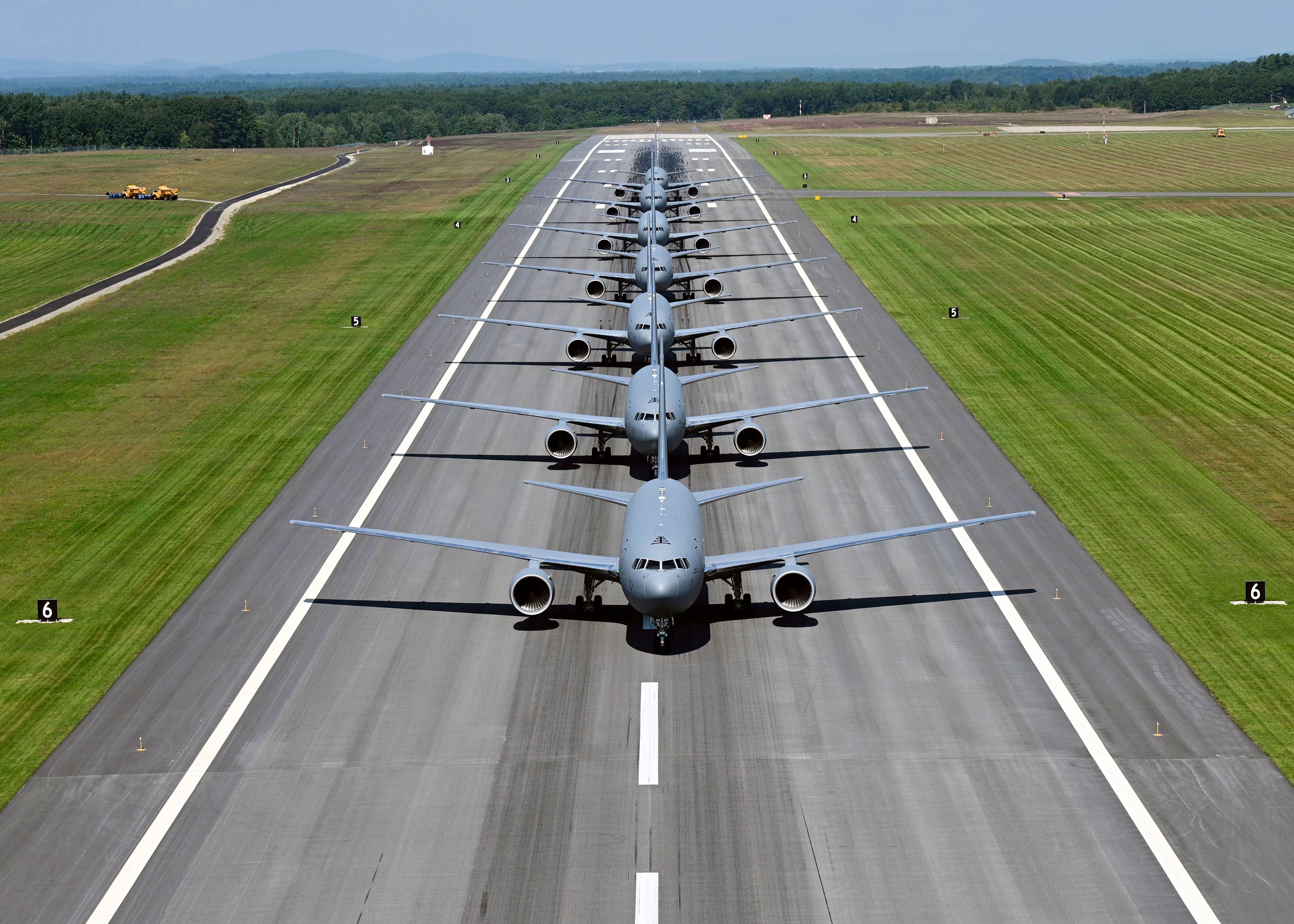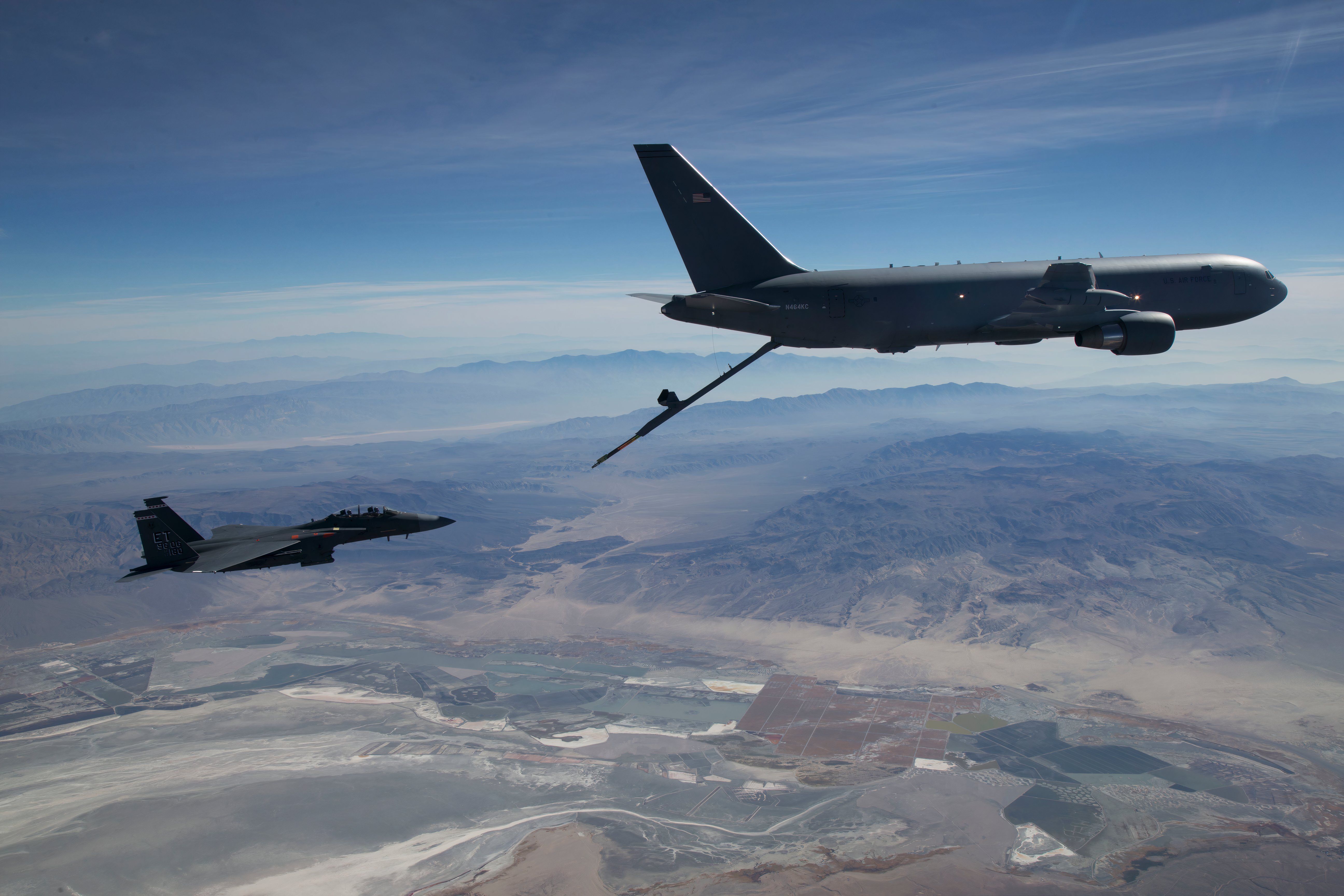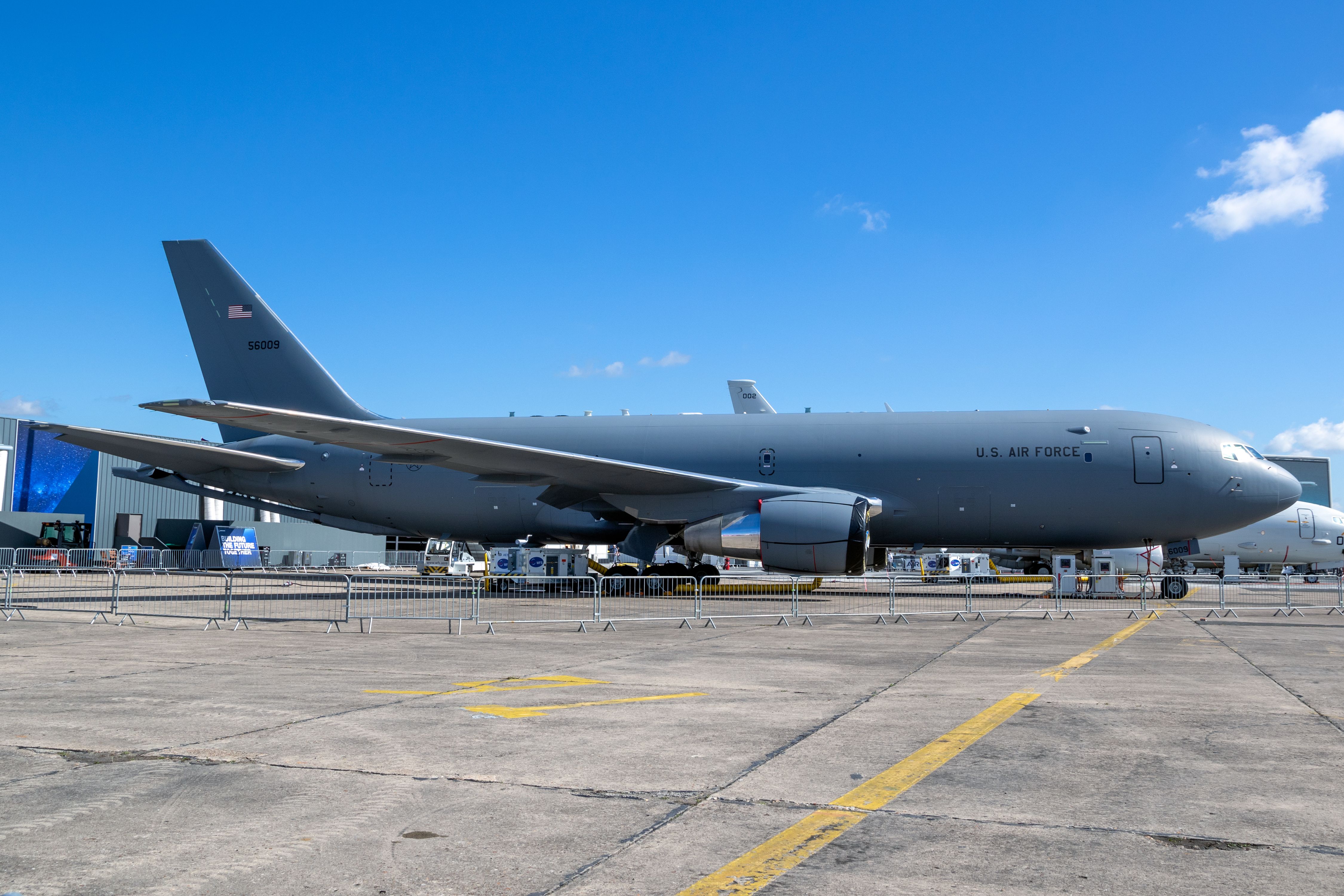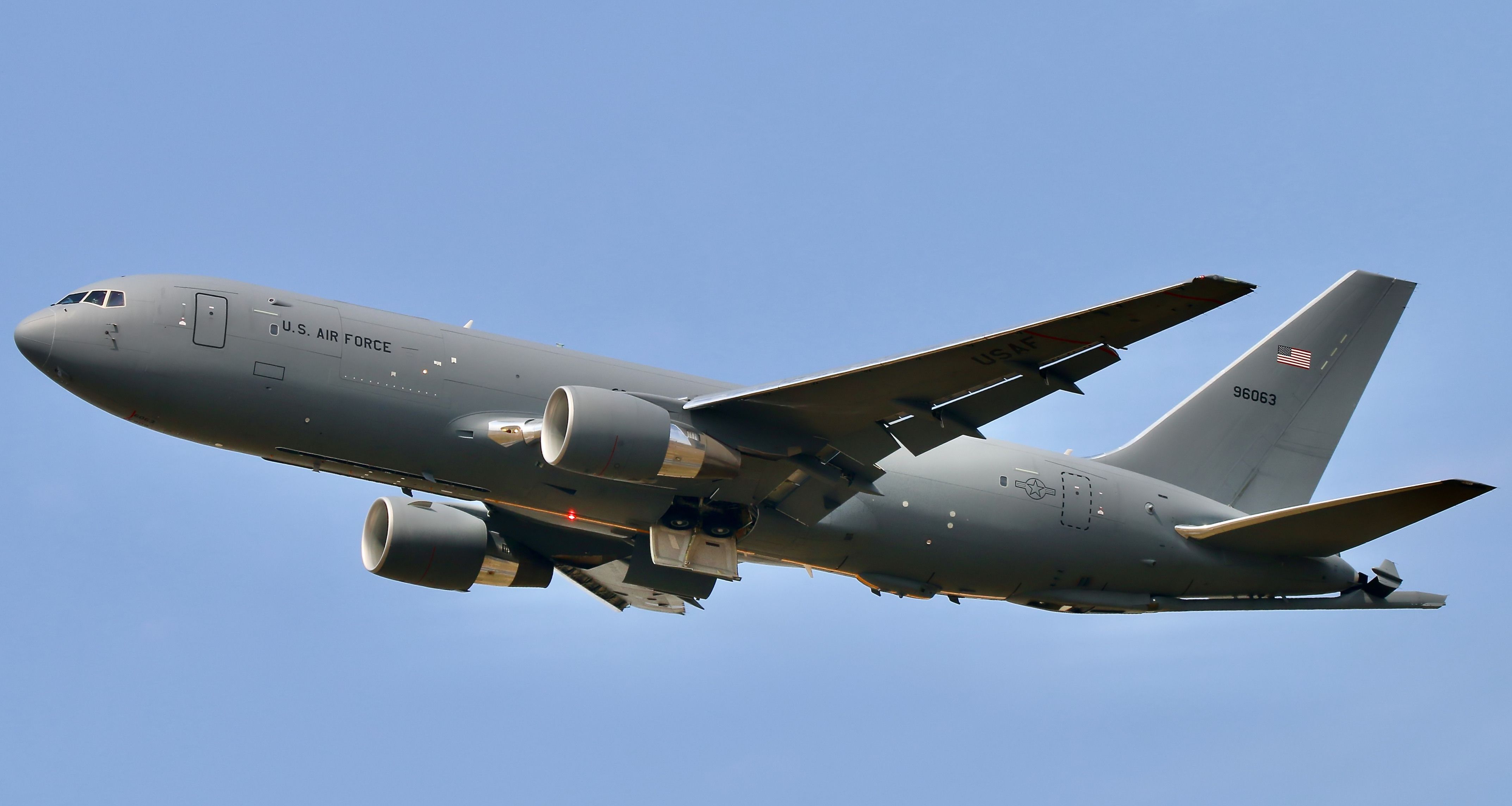The Boeing KC-46 Pegasus is a strategic military transport and aerial refueling aircraft designed and developed by Boeing in the early 2010s. Developed from the Boeing 767 commercial jetliner, the KC-46 program received clearance from the United States Air Force (USAF) to replace the older Boeing KC-135 Stratotanker.
The USAF received its first two KC-46A aircraft in January 2019 as part of the 22nd Air Refueling Wing. Based at McConnell Air Force Base in Wichita, Kansas, the aircraft began operational service in the following years.
Currently, the USAF operates 99 KC-46As, 84 of which are deployed as of January and are used in a variety of missions, including aerial refueling, transport of cargo and military personnel, and aeromedical evacuation.
The USAF fleet of KC-46s also offers support to partner nations. The USAF aims to procure 179 KC-46A tankers by 2017. According to the Air Force,
“The KC-46A represents the beginning of a new era in air-to-air refueling capability for the joint force. The aircraft has been in development since Feb. 24, 2011, and its initial flight occurred in Dec. 2014. The current contract, with options, provides Air Mobility Command an inventory of 179 KC-46A tankers.”
Photo: US Air Force
The USAF KC-46A functions
- Primary Function: Aerial refueling and airlift
- Prime Contractor: The Boeing Company
- Power Plant: 2 Pratt & Whitney 4062
- Thrust: 62,000 lbs. – Thrust per High-Bypass engine (sea-level standard day)
- Maximum Takeoff Weight: 415,000 pounds (188,240 kilograms)
The USAF KC-46A Pegasus is used in a variety of internal missions (across various divisions of the US military) as well as for supporting allied partners and their forces.
Aerial refueling
- Fuel Capacity: 212,299 lb (96,297 kg)
- Fuel Capacity (vol): 31,220 US gal (118,200 L)
- Maximum Transfer Fuel Load: 207,672 lb (94,198 kg)
It is the KC-46 Pegasus’ primary function. The 767-jetliner variant has the capability to carry and store up to 212,299 lbs of fuel, allowing an enormous range for the aircraft and the capability to refuel large aircraft in flight. The rear of the aircraft features a fly-by-wire refueling boom system with refueling pods on each wingtips.
Photo: U.S. Air Force
The system encompasses a hydraulic relief valve system to relieve axial pressure in the boom. With the advanced system, the aircraft is capable of refueling most aircraft with a boom-receiver system. According to the Air Force,
“At full operational capability, the KC-46A will be able to refuel most fixed-wing, receiver-capable aircraft. The KC-46A is equipped with a refueling boom driven by a fly-by-wire control system and is capable of fuel offload rates required for large aircraft.”
The centerline drogue and hose system allows an additional mission-capable system that is independent of the refueling boom system. The highly-advanced fly-by-wire system allows both systems to work simultaneously and independently of one another. The fuel is pumped through the drogue, the boom, and aerial refueling pods.
The aircraft’s fuel can be pumped through the boom, drogue, and wing aerial refueling pods. All KC-46As are capable of being configured with WARPs, and when equipped, the aircraft is capable of multi-point simultaneous aerial refueling. The Boom Operator controls the boom, centerline drogue, and WARPs during refueling operations. The Air Refueling Operator station includes panoramic displays, giving the ARO wing-tip to wing-tip situational awareness.
Military air transport
- Wingspan: 156 feet, 1 inch (47.5 meters)
- Length: 159 feet, 2 inches (48.5 meters)
- Height: 51 feet, 9 inches (15.5 meters)
- Maximum Cargo Capacity: 65,000 pounds (29,484 kilograms), 58 passengers
- Pallet Positions: 18 pallet positions
The KC-46A is a large transport aircraft with a cargo capacity of up to 65,000 lbs (29,484 kg). The USAF initially aimed at operating transport operations onboard the KC-46s early on. However, in September 2019, months after the first deliveries, the agency discovered an issue with the floor cargo locks, restricting the aircraft use for passenger and cargo operations.
Photo: VanderWolf Images | Shutterstock
The unintended unlocking of the locks mid-flight compromised the safety of the aircraft. Boeing approved a fix in November and issued a retrofit for the delivered aircraft. By the end of the year, multiple aircraft had received new cargo locks, resuming transport operations for the USAF.
The Air Force states,
“Depending on fuel storage configuration, the aircraft can carry a palletized load of up to 65,000 pounds of cargo. The KC-46A can carry up to 18 463L cargo pallets. Seat tracks and the onboard cargo handling system make it possible to simultaneously carry palletized cargo and passenger seats in a variety of combinations.”
Aeromedical evacuation
The US military also uses the KC-46 fleet for aeromedical evacuations, both during combat missions and humanitarian operations. The size of the aircraft, along with its tremendous airlift capabilities, makes it ideal for such operations.
According to the Air Force,
“The KC-46A can accommodate a mixed load of passengers, aeromedical evacuation and cargo capabilities.”
“The KC-46A is also equipped with a number of self-protection, defensive and communication features making it more survivable in a contested environment.”





